
Roots
Consider, for a moment, the whisper of the desert wind across ancient sands, carrying not only dust but also the faint scent of oils and resins. This subtle aroma hints at a deeper story, one woven into the very fabric of life along the Nile ❉ the profound meaning held within a single strand of hair. For the people of ancient Egypt, hair was never simply a biological outgrowth.
It stood as a vibrant canvas, a living testament to their worldview, reflecting not only physical care but also social standing, spiritual connection, and a deep reverence for the cycles of existence. To understand hair hydration in this context, we must first look beyond the surface, recognizing hair as a powerful symbol, a medium through which the Egyptians expressed their deepest convictions about order, purity, and the promise of life beyond the earthly realm.
The very concept of self in ancient Egypt was intrinsically linked to presentation. A well-kept appearance signaled more than personal vanity; it represented an alignment with Ma’at, the cosmic principle of truth, balance, and order. Hair, with its capacity for growth and transformation, became a tangible representation of this ideal.
Its care, therefore, extended far beyond simple grooming. It was a daily act of attunement, a quiet acknowledgment of one’s place within a meticulously ordered universe.
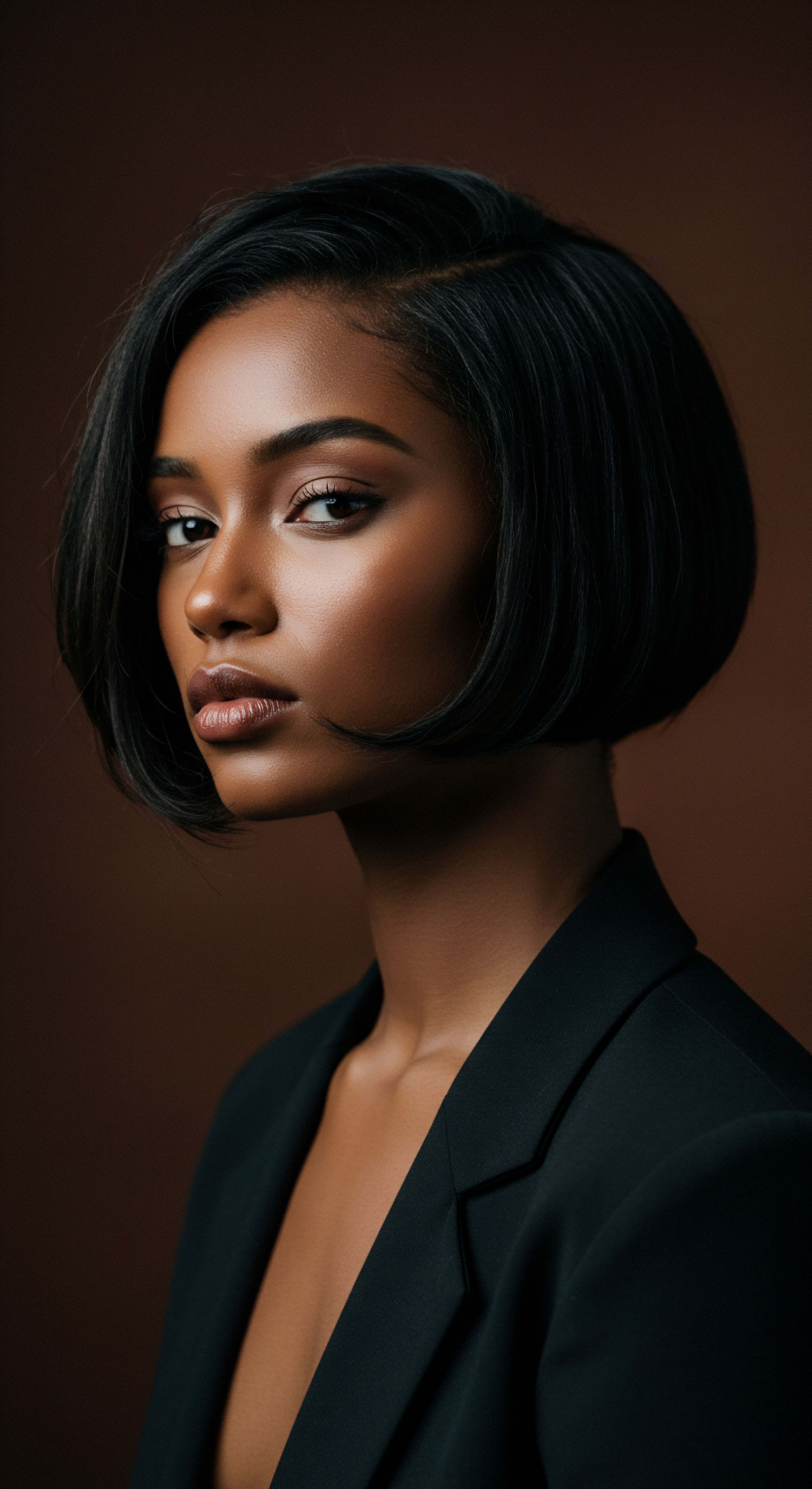
Hair as a Symbol of Identity and Status
In ancient Egypt, hair communicated a wealth of information about an individual. It was a visual cue, instantly conveying details about one’s gender, age, and position within the intricate social hierarchy. The way hair was styled, or whether it was present at all, spoke volumes without a single word exchanged. This societal practice extended from the highest echelons of royalty to the common populace, though the means and extravagance of hair care varied considerably.
Children, for instance, often sported a distinctive “sidelock of youth,” a single plait remaining on an otherwise shaved or closely cropped head. This unique style marked their age and innocence, a visual representation of their pre-pubescent state. Upon reaching adulthood, this sidelock was removed, signifying a passage into a new phase of life and the adoption of more gender-specific hairstyles.
Hair in ancient Egypt served as a profound indicator of identity, social standing, and connection to cosmic order.
For adults, hairstyles became even more elaborate and stratified. Men, particularly in earlier periods, often maintained short hair or shaved heads, a practice that offered practical benefits in the hot climate and aided in hygiene. However, elite men frequently donned elaborate wigs, meticulously crafted from human hair or plant fibers.
These wigs were not merely decorative; they were potent symbols of wealth and prestige, a visual display of one’s elevated place in society. The weight of these wigs could be substantial, with some reaching several pounds, further underscoring the dedication to outward presentation among the elite.
- Children’s Hair ❉ Typically shaved with a distinct sidelock, signaling youth and innocence.
- Men’s Hair ❉ Often short or shaven for hygiene, with elites favoring elaborate wigs as status markers.
- Women’s Hair ❉ Varied from short bobs to long, plaited styles, often augmented with wigs and adornments.
Women, too, expressed their status through their coiffures. While some opted for shorter styles in certain periods, long, often braided or plaited hair, was widely admired and frequently enhanced with extensions or full wigs. These could be adorned with precious metals, beads, and flowers, further accentuating the wearer’s position and aesthetic sensibilities. The sheer diversity of styles, from simple braids to complex arrangements, speaks to a society that valued hair as a powerful means of personal and collective expression.
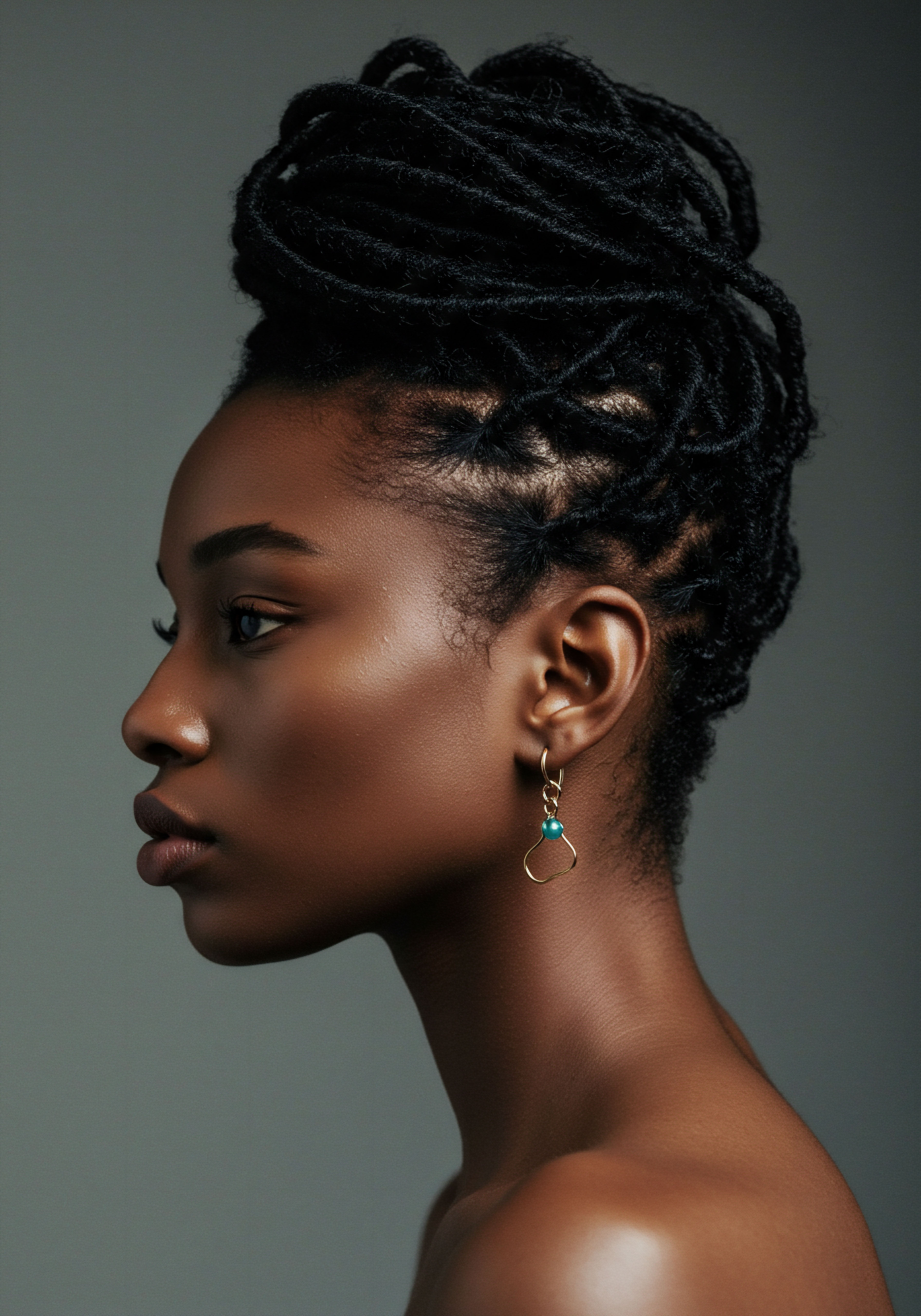
Hair as a Conduit to the Divine
Beyond its social implications, hair held significant religious and magical connotations for the ancient Egyptians. It was seen as a source of power, both benevolent and, at times, potentially harmful. This spiritual dimension elevated hair care beyond mere earthly concerns, imbuing it with sacred purpose.
In funerary rituals, hair played a particularly poignant role. Mourners, especially women, would express their grief by pulling and shaking their hair, a dramatic gesture depicted in reliefs and paintings. This act was not simply a display of sorrow; it was connected to the deceased’s passage into the afterlife, believed to aid in their resurrection.
Locks of hair were sometimes placed in tombs as offerings, a tangible connection between the living and the departed, or even as a means for the deceased to exert protective power from beyond. The very presence of preserved hairstyles on mummies, often treated with fatty substances, points to a desire to maintain the individual’s appearance and identity even in death, ensuring a successful transition to the next realm.
Certain deities were also associated with hair. Hathor, the goddess of beauty, love, and fertility, was sometimes known as “She of the Beautiful Hair” or “Lady of the Lock.” Devotees might even wear specific hair extensions as a symbolic badge of their connection to her. This intertwining of hair with divine figures and religious practices underscores its deep spiritual resonance within ancient Egyptian society. The meticulous care given to hair, including its hydration, thus became a quiet act of devotion, a way to honor the divine and ensure one’s well-being in this life and the next.
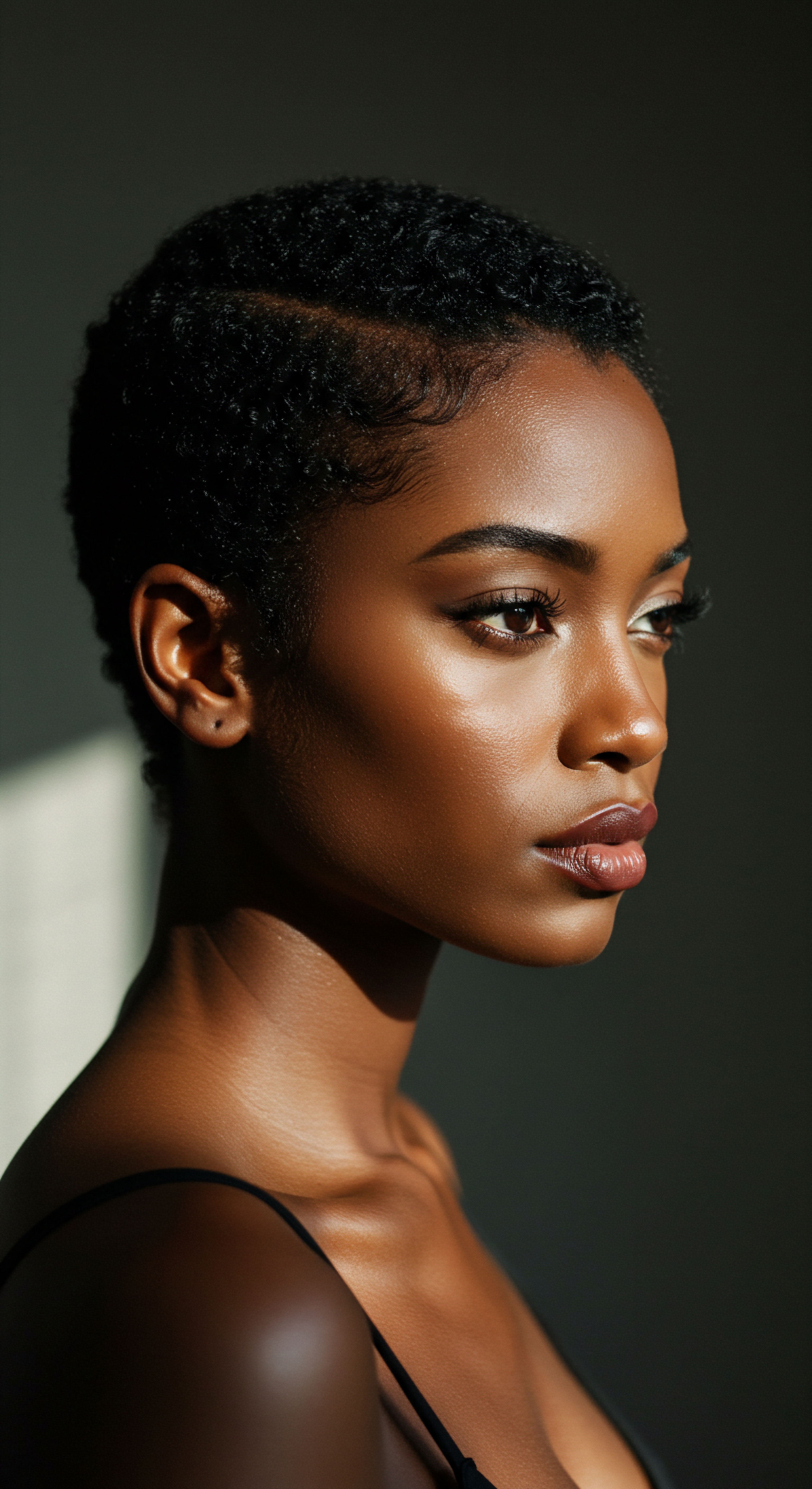
Ritual
As we step from the conceptual grounds of hair’s symbolic weight, a quiet invitation presents itself to observe the daily rhythms of ancient Egyptian life. How did they tend to their hair, day after day, under the desert sun? The answer lies not in grand pronouncements, but in the careful application of oils, the patient combing of strands, and the crafting of elaborate styles that served both practical and aesthetic ends. This section guides us through the tangible practices, the rituals of care that brought the abstract significance of hair into lived experience, exploring how these ancient hands maintained healthy, lustrous hair in a challenging environment.
The ancient Egyptians were keen observers of their surroundings, drawing upon the natural world for remedies and beauty preparations. Their climate, characterized by intense sun and arid conditions, necessitated a proactive approach to skin and hair health. Hydration was not a luxury; it was a practical necessity to combat dryness and maintain vitality. This understanding formed the bedrock of their daily hair care practices.

Daily Practices for Hair Vitality
The pursuit of well-conditioned hair was a common endeavor for ancient Egyptians, regardless of social standing. Their routines involved a combination of cleansing, moisturizing, and styling, all aimed at preserving the hair’s appearance and health. Archaeological discoveries of cosmetic vessels, combs, and ointments in tombs attest to the widespread investment in these practices.
Central to their hair care was the liberal application of various oils and fats. These substances served as the primary means of hydration, providing a protective barrier against the harsh environment and imparting a desirable sheen.
Some of the most frequently employed oils included:
- Castor Oil ❉ Widely used for its moisturizing properties, castor oil was applied to condition and strengthen hair, often mixed with other natural ingredients like honey and herbs to create masks that promoted growth and added shine. Its use dates back to ancient Egypt, with some sources suggesting Egyptians were pioneers in its application for hair health.
- Almond Oil ❉ Applied to keep hair smooth and soft, almond oil was a staple in their routines.
- Moringa Oil ❉ Known for its nourishing qualities, moringa oil contributed to maintaining soft, smooth hair.
- Olive Oil ❉ Though perhaps less common than some other oils, olive oil was also utilized for its conditioning properties, sometimes infused with herbs.
These oils were not merely applied; they were often massaged into the scalp, a practice believed to stimulate growth and improve overall hair health. Combs, some made from fish bones, aided in distributing these oils evenly through the strands. The meticulousness of these applications points to a sophisticated understanding of hair needs, even without modern scientific tools.

Beyond Basic Hydration ❉ Hygiene and Protection
While aesthetic appeal was certainly a driving force, the practical benefits of hair hydration and care were equally significant. The use of oils also served as a deterrent against common nuisances like lice, a persistent concern in ancient societies. Shaving the head was another common practice, particularly among priests, to maintain ritual purity and cleanliness. For those who shaved, wigs offered protection from the sun’s intense rays while allowing body heat to escape through their mesh foundations.
Ancient Egyptian hair care was a thoughtful blend of aesthetic desire and practical necessity, heavily reliant on natural oils for hydration and protection.
Wigs themselves, a prominent feature of ancient Egyptian hair fashion, received extensive care. Made from human hair, wool, or plant fibers, they were often treated with emollients and oils to maintain their appearance and prolong their lifespan. The effort invested in preserving wigs speaks to their value, both as fashion statements and as symbols of status.
The care routines extended to addressing specific hair concerns. Recipes believed to prevent hair loss, promote new growth, and even combat graying have been discovered, utilizing ingredients like henna for dyeing and various animal fats mixed with oils. This proactive approach to hair wellness underscores a deep-seated desire to maintain youthful appearance and vitality for as long as possible.
The ritual of hair hydration in ancient Egypt was thus a multifaceted practice. It was a daily commitment to cleanliness, a practical defense against environmental challenges, and a quiet affirmation of beauty standards that transcended mere physical appearance, linking individual well-being to broader cultural and spiritual ideals.

Relay
Having observed the foundational understanding and daily practices of hair care in ancient Egypt, we now move to a deeper consideration ❉ how did these acts of hydration and styling connect to the very pulse of their society, influencing social structures, religious beliefs, and even their understanding of the afterlife? This section invites a closer examination of the intricate interplay between hair care and the broader cultural landscape, exploring how seemingly simple acts of grooming were imbued with profound meaning, shaping identities and reflecting complex worldviews.
The cultural weight of hair hydration in ancient Egypt extends far beyond the immediate sensation of softened strands or a lustrous sheen. It served as a silent language, communicating social standing, gender roles, and even spiritual preparedness. The practices themselves were not arbitrary; they were deeply rooted in a comprehensive worldview that saw physical appearance as a mirror of inner state and cosmic alignment.

Hair as a Social Stratifier
Hair served as a potent visual marker of social class and position. The distinction between the elaborate, often wig-adorned styles of the elite and the simpler, natural hair of the common populace was clear. This differentiation was not simply about aesthetic preference; it was a deliberate system of visual communication, reinforcing the rigid social hierarchy of ancient Egypt.
| Social Group Elite Men |
| Typical Hair Practices Shaven heads, elaborate wigs of human hair, often adorned. |
| Cultural Significance Signaled wealth, authority, cleanliness, and protection from sun. |
| Social Group Elite Women |
| Typical Hair Practices Long, styled natural hair, or elaborate wigs with extensions, adorned with jewelry. |
| Cultural Significance Displayed beauty, status, and sometimes fertility; wigs offered protection. |
| Social Group Priests |
| Typical Hair Practices Shaven heads. |
| Cultural Significance Mandatory for ritual purity, avoiding lice. |
| Social Group Children |
| Typical Hair Practices Shaved heads with a "sidelock of youth." |
| Cultural Significance Indicated age, innocence; removal marked passage to adulthood. |
| Social Group Commoners |
| Typical Hair Practices Often natural hair, less elaborate styles, simpler adornments. |
| Cultural Significance Practicality, less emphasis on artificial enhancement. |
The sheer cost of acquiring and maintaining elaborate wigs, often made from human hair which was a valuable commodity, meant they were almost exclusively the domain of the wealthy. This exclusivity solidified their role as a clear visual signal of high social standing. The quality of the wig, the intricacy of its style, and the preciousness of its adornments directly correlated with the wearer’s influence and affluence.

Beyond Life ❉ Hair and the Afterlife
The meticulous care given to hair extended beyond mortal existence, reflecting the ancient Egyptians’ deep conviction in an afterlife. Hair, like other aspects of the body, was prepared for the journey to the next world, a practice that underscored the belief in a continued, idealized form of self.
Archaeological findings consistently show cosmetics vessels, hair ornaments, and even preserved hair in tombs, suggesting that looking appealing was important even in the grave. The inclusion of these items aimed to ensure the deceased’s successful rebirth and entry into the afterlife. Hair was sometimes treated with fat-based preparations during mummification, not only to preserve it but also to maintain its style, ensuring the deceased’s individuality remained intact. This highlights the profound connection between physical appearance in life and the desired state in the eternal realm.
Hair care in ancient Egypt was a sophisticated system of social communication, reflecting status and a deep spiritual connection to the afterlife.
The funerary texts themselves, such as the Coffin Texts from the Middle Kingdom, contain numerous allusions to hair, indicating its symbolic weight in the mortuary context. Rituals involving hair, such as mourners pulling their hair or offerings of braided locks in graves, were believed to contribute to the deceased’s resurrection. This suggests a powerful, almost magical, association of hair with regeneration and continued existence.

The Science Behind Ancient Hydration Practices
While the cultural and spiritual dimensions are undeniable, the ancient Egyptians also possessed a practical understanding of hair’s needs, particularly in their arid environment. Modern scientific analysis of ancient hair samples has begun to reveal the efficacy of their hydration practices.
A compelling example of this scientific understanding comes from a study conducted by Natalie McCreesh and her colleagues at the KNH Centre for Biomedical Egyptology at the University of Manchester. Their research involved analyzing hair samples from 18 mummies, some dating back 3,500 years, excavated from various sites including the Dakhleh Oasis. Using techniques like gas chromatography–mass spectrometry, they discovered that nine of these mummies had hair coated in a mysterious fat-like substance. This coating contained biological long-chain fatty acids, specifically Palmitic Acid and Stearic Acid.
McCreesh postulates that this fatty coating was a styling product used to set hair in place during life and was also a key component of the mummification process, applied to preserve the hairstyle. This finding challenges the simplistic notion that ancient beauty practices were purely rudimentary. It suggests a deliberate application of substances with known emollient properties, which would have provided significant hydration and protection to the hair in the harsh desert climate.
The presence of these fatty acids indicates a sophisticated, albeit empirical, understanding of how to maintain hair integrity and appearance, even across millennia. This level of practical chemical knowledge, applied to hair, underscores a society deeply invested in both the aesthetics and the longevity of their physical presentation.
- Fatty Acid Composition ❉ Analysis of mummy hair reveals palmitic and stearic acids, indicating deliberate use of hydrating fats.
- Preservation and Style ❉ These fat-based products likely served to set hairstyles in life and preserve them for the afterlife.
- Environmental Adaptation ❉ Such hydration methods were essential for protecting hair from the extreme dryness of the Egyptian climate.
The use of specific oils like castor oil, which is rich in ricinoleic acid and other fatty acids, further supports this. Modern research, while often anecdotal, acknowledges castor oil’s potential to improve hair growth and quality, and its historical use in ancient Egypt for nourishing the scalp and strengthening hair follicles aligns with this understanding. The Egyptians were, in essence, early cosmetic chemists, experimenting with natural ingredients to achieve desired effects, demonstrating a practical science interwoven with their cultural values.
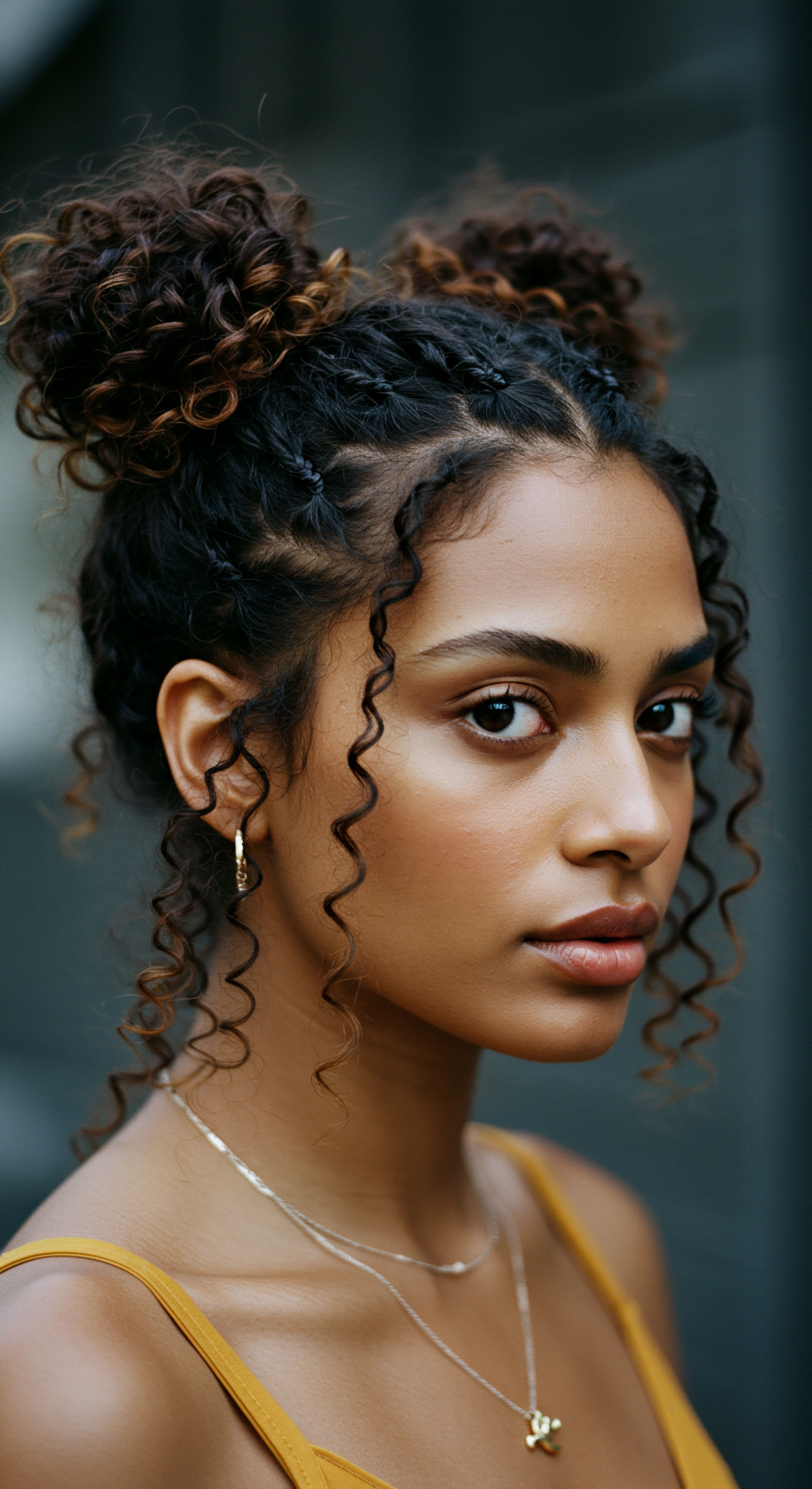
Reflection
The ancient Egyptian approach to hair hydration was a delicate dance between the earthly and the ethereal, a testament to a culture that perceived beauty not as superficial adornment, but as an integral expression of order, status, and spiritual continuity. Their practices, rooted in a deep understanding of natural resources and a profound reverence for appearance, offer us a quiet whisper across millennia. It reminds us that caring for our strands, no matter their texture or form, can be a connection to something larger than ourselves—a quiet ritual of self-respect, heritage, and the enduring human desire for beauty that reaches far beyond the looking glass.
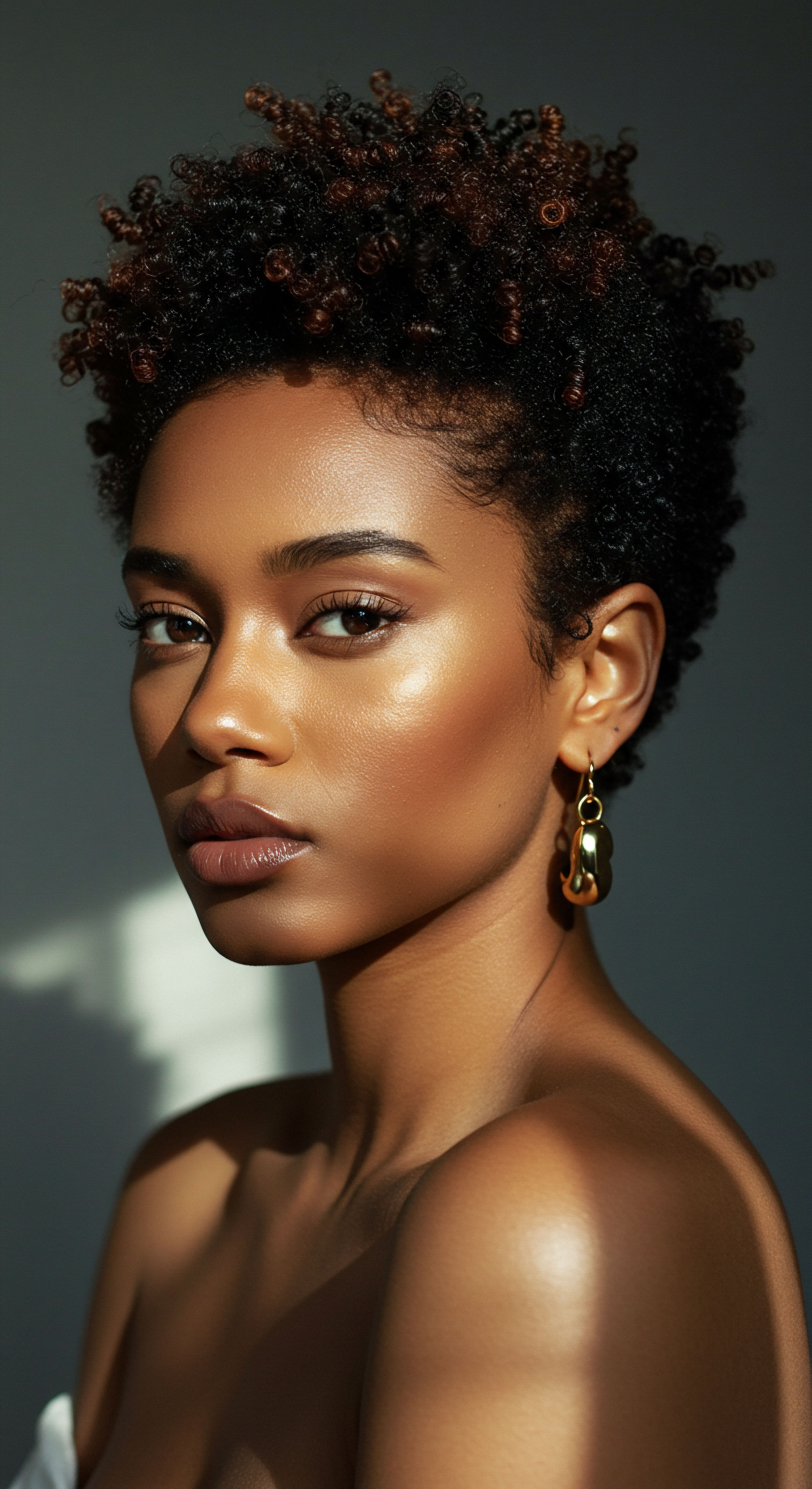
References
- Dawson, W. R. (1927). Egyptian Medical Papyri. In ❉ Singer, C. (ed.) Studies in the History and Method of Science, Vol. 2. Oxford ❉ Clarendon Press.
- Derchain, P. (1962). Le sacrifice de l’oeil dans les textes des pyramides. Bruxelles ❉ Fondation Égyptologique Reine Élisabeth.
- Fletcher, J. (1995). Ancient Egyptian Hair ❉ A Study in Egyptology and Human Biology. Unpublished PhD thesis, University of Manchester.
- Fletcher, J. (1998). Hair. In ❉ Nicholson, P. T. and Shaw, I. (eds.) Ancient Egyptian Materials and Technology. Cambridge ❉ Cambridge University Press.
- Fletcher, J. (2004). The Complete Tutankhamun ❉ The King, The Tomb, The Royal Treasure. London ❉ Thames & Hudson.
- Lucas, A. (1930). Ancient Egyptian Materials & Industries. London ❉ Edward Arnold & Co.
- McCreesh, N. & Gize, A. P. (2011). Ancient Egyptian hair gel ❉ New insight into ancient Egyptian mummification procedures through chemical analysis. Journal of Archaeological Science, 38(11), 3326-3332.
- Raafat El-Sayed, A. & El-Din Fouad, M. (2020). Cosmetic Practices in Ancient Egypt. Journal of Association of Arab Universities for Tourism and Hospitality, 17(1), 49-65.
- Robins, G. (2020). Hair, Gender, and Social Status in Ancient Egypt. JSTOR Daily.
- Tassie, G. J. (2009). The Social and Ritual Contextualisation of Ancient Egyptian Hair and Hairstyles from the Protodynastic to the End of the Old Kingdom. Unpublished PhD thesis, University College London.
- Teeter, E. (2000). The Presentation of Maat ❉ Ritual and Reality in Ancient Egyptian Kemet. Chicago ❉ Oriental Institute of the University of Chicago.
- Valdesogo, M. R. (2015). Lunar Rituals with Hair in the Ancient Egyptian City of Heliopolis. Papyrus, 1(1), 1-11.
- Valdesogo, M. R. (2018). Hair and Death in Ancient Egypt ❉ The Mourning Rite in the Times of the Pharaohs. Oxford ❉ Archaeopress Publishing Ltd.
- Watterson, B. (1991). Women in Ancient Egypt. New York ❉ St. Martin’s Press.